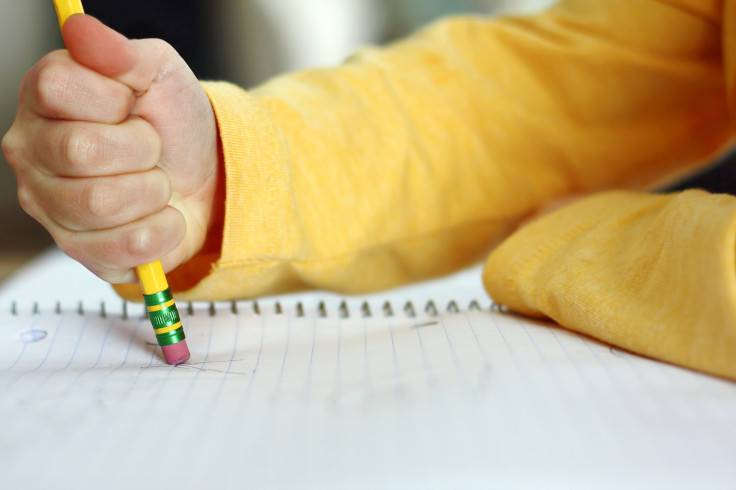Self-Harm 'Eraser Challenge' In Connecticut Middle School Poised To Become Yet Another Dangerous Internet Trend

Puberty is a time of awkward school dances, first kisses, and embarrassing fashion mistakes. Now, however, more than ever before, puberty has become a time of dangerous self-harming activities. Although we may have an ideal image of our adolescence as a time of growth and learning, in reality we are learning that there are an awful lot of crazy and sometimes sickening activities that young teens will willingly take part in. These trends are being propelled into popularity by the Internet and social media. A middle school in Connecticut has made headlines this week after reports of a number of their students taking part in the "ABC Eraser Challenge."
As explained on the Bethel Patch, the alphabet eraser challenge involves students rubbing their arms with an eraser while reciting the alphabet and thinking up a word for each letter. This usually results in the skin being injured and puts the children at risk for infection. When teachers at Bethel Middle School became aware of the trend that was sweeping their hallways, they immediately released a warning to parents.
“When I found out kids were sharing erasers, so as they broke the skin they were passing the eraser off to somebody else, body fluid being shared, and that’s a concern of mine,” Derek Muharem, principal at Bethel Middle School, explained to Patch. The nature of the game surfaced when a group of concerned students approached a teacher about the worrying wounds their classmates were receiving thanks to the game. According to a report by The Huffington Post, a YouTube search of the eraser challenge will give you a plethora of videos showing young teens inflicting painful and potentially scarring harm to their forearms.
Although the Eraser Challenge has created quite a stir in Bethel, Conn., the game is far from new and has existed in different forms for many years. Earlier versions of the game involved scratching the forearm with a fingernail or rubbing it with a hand to inflict friction burn. The driving force that seems to set this trend apart, along with earlier ones, is the easy access to the Internet that young teens now have. Before, a trend may have swept a town or even a city but would soon die and kids would become obsessed with a new way to pass their time. Now the Internet allows these trends to spread quicker across the nation, and YouTube and social media serves almost as a forum where these young adolescents can show off their scars and become an online sensation overnight.
A more recent example of these dangerous online challenges is the Cinnamon Challenge, which had its participants ingest a large amount of cinnamon without any water. The most recent Neknomination alcohol binge drinking challenge contributed to five deaths. “If you get one kid doing it, you tend to see more kids doing it,” Dr. Thomas Abramo explained to ABC News. Although there are regulations on YouTube which monitor the distribution of videos that promote dangerous activities, the speed and widespread popularity of the website makes it difficult to take the videos down before they are seen by impressionable teens. “We count on our users to flag content they believe violates the rules. We review flagged content around the clock and remove all that violate our polices,” a Youtube spokesperson informed ABC News.
Experts believe the solution is not in restricting the Internet, but informing children of the dangers they are bound to encounter on it. “Stress here should be on knowing our children, watching behaviors and having conversations with them. There’s no substitute for parents and teachers who are engaging with their kids in general,” Dr. Carol Bernstein, a psychiatry professor at New York University, concluded in a report by ABC News.



























